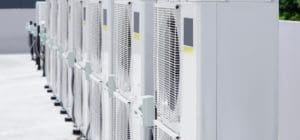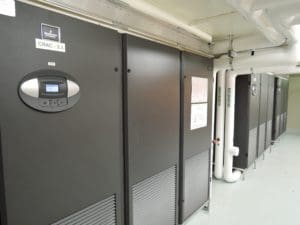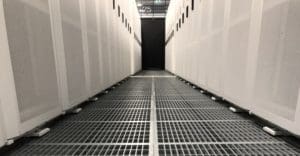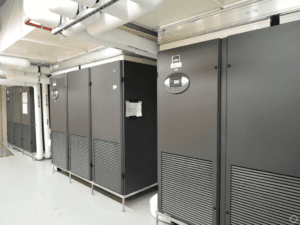CRAC units are crucial for maintaining optimal temperature and airflow in data centres, ensuring your equipment runs efficiently and reliably. At EziBlank, we understand the demands of modern infrastructure, and our innovative solutions are designed to enhance the performance of your CRAC units while significantly reducing energy consumption. With our expertly crafted blanking panels, you'll be investing in a system that not only optimises airflow but also maximises your return on investment. Explore how EziBlank can elevate your operations and drive down costs today!
The 411 on CRAC Units
Computer Room Air Conditioning (CRAC) units are essential components in data centre cooling systems, designed to maintain optimal temperature and humidity levels for sensitive IT equipment. These units work by drawing warm air from the data centre, cooling it, and then distributing the chilled air back into the room, ensuring that servers and other hardware operate within safe temperature ranges. CRAC units often feature precise controls to maintain consistent environmental conditions, which is crucial for preventing overheating and ensuring the longevity of equipment. Incorporating CRAC units into a data centre's cooling strategy, along with effective airflow management techniques like blanking panels and aisle containment, helps improve overall cooling efficiency and reduce energy consumption.
Read More
Higher efficiency is the new energy standard for data centre
Higher efficiency has become the new energy standard for data centres as organisations increasingly prioritise sustainability and cost-effectiveness in their operations. Achieving this standard involves adopting advanced technologies and best practices that significantly reduce energy consumption without compromising performance. Key strategies include optimising airflow management with solutions like blanking panels and hot/cold aisle containment, which prevent the mixing of hot and cold air, thereby improving cooling efficiency. Upgrading to energy-efficient hardware and implementing advanced cooling techniques, such as liquid cooling, also contribute to reducing power usage. Additionally, real-time monitoring of energy metrics, such as Power Usage Effectiveness (PUE), allows data centre managers to make informed decisions and continually refine their operations. Embracing these practices not only helps data centres lower their operational costs but also aligns them with global sustainability goals, making higher efficiency the new benchmark in the industry.
Read More
High performance directional floor tiles for high density equipment racks
High-performance directional floor tiles are a critical component in data centre design, specifically engineered to optimise airflow and cooling efficiency. These tiles are strategically placed within raised floor systems to direct cool air from the underfloor plenum towards the server racks, ensuring that the air reaches the equipment that needs it most. By guiding airflow precisely, directional floor tiles help maintain consistent temperatures across the data centre, prevent hotspots, and reduce the workload on cooling systems. This leads to more efficient cooling, lower energy consumption, and improved overall performance of the data centre. Incorporating these tiles into a data centre's design is an effective way to enhance both energy efficiency and operational reliability.
Read More
Know Your Data Centre Cooling
Understanding your data centre cooling system is essential for maintaining optimal performance and energy efficiency. Effective cooling strategies are crucial in preventing overheating, which can lead to equipment failure and costly downtime. Key aspects of data centre cooling include airflow management, where techniques like hot and cold aisle containment and the use of blanking panels help to direct cool air to the right places while preventing hot air recirculation. Additionally, advanced cooling technologies such as liquid cooling or free cooling can further enhance efficiency by reducing reliance on traditional air conditioning. Regular monitoring of temperature and humidity levels is also critical, allowing for real-time adjustments to maintain optimal conditions. By knowing and optimising your data centre's cooling, you can significantly reduce energy consumption, lower operational costs, and ensure the long-term reliability of your IT infrastructure.
Read More
